Police to Offer Outreach Program for Scarsdale Seniors
- Details
- Written by Joanne Wallenstein
- Hits: 4455
 The Scarsdale Police Department will launch The Senior Outreach Academy designed to help Scarsdale's senior citizens deal with crimes that target them, and give them an inside look at how the department functions and equipment and technology are employed. It will also give participants the opportunity to meet the men and women of the Scarsdale Police Department, and give the officers a chance to interact with the community they serve.
The Scarsdale Police Department will launch The Senior Outreach Academy designed to help Scarsdale's senior citizens deal with crimes that target them, and give them an inside look at how the department functions and equipment and technology are employed. It will also give participants the opportunity to meet the men and women of the Scarsdale Police Department, and give the officers a chance to interact with the community they serve.
The Scarsdale Police began conducting an annual "Citizens Teen Police Academy" several years ago, and they are expanding this concept to Scarsdale senior citizens. The academy is a four-week program that will meet on the following dates in October: 4th, 11th, 18th, and 25th at the Scarsdale Police Station from 10:00 to 11:00 am. Light refreshments will be served. To sign up, call Detective Sherri Albano at 722-1204.
We asked Captain Thomas Altizio about how the department assists seniors and what crimes target older residents. Here is what he shared:
How do you locate and reach out to seniors in the community?
The most common way that we locate seniors that may need assistance is when patrol officers respond to a call involving a senior, and the officer feels that the person is in need of some type of assistance. It may be a case where a senior has been victimized, or a situation where a senior is experiencing some sort of medical problem, and the officer feels that they may need additional assistance. Those type of cases are referred to Detective Albano, who is our "Older Adult Advocate." Several times a week. Detective Albano will contact the individuals who have been referred to her, and either meet with them or call them. Depending on the circumstances, she has a number of options available to her. For one, she can notify the person's family in the hope that the family can resolve the problem.
In cases where the senior does not have family that is available or willing to assist them, a referral may be made to Scarsdale Family Counseling, or in some cases, Westchester County Adult Protective Services. If the senior has been the victim of a crime, we work with the Westchester County District Attorney's Office Special Prosecutions Unit, which specifically handles cases involving crimes against children and seniors.
Detective Albano also interacts with the Villages Advisory Council on Senior Citizens and attends their meetings.
Does the Police Department provide special services for seniors?
One of the services we offer is an automated calling system called "RUOK" (Are you okay) which makes a daily telephone call to a subscriber at a specified time. The person must answer the phone and press a number specified by the recording to acknowledge the call. If the subscriber does not answer the phone, and enter the proper number, an alert is generated and a police officer is dispatched to check on the person. If we are not able to make contact with the subscriber, we may force our way in (depending on the circumstances), or we make notification to emergency contacts that have been provided when the person signed up.
What kinds of crimes are likely to involve seniors?
Seniors are often victimized by telephone scams and phony or disreputable home repair contractors. The most common phone scam is known as the "Grandchild In Jail". In this scam, the caller will claim to be a friend or relative that got into trouble or was involved in an accident in another country (often Mexico, Canada or one of the Caribbean Islands) and needs money to get out of jail. In some cases the scammer will tell the victim they are a police officer and their grandchild has been arrested and needs to have money sent to them for bail. The scammer will require that a Western Union MoneyGram be sent or Green Dot Card Money Card be purchased and the card number provided to them. Unfortunately, we have had numerous victims of this scam.
Disreputable contractors frequently victimize senior homeowners. They will alarm the victim that their home is in need of repairs, and warn that if they don't do it right away they will be in danger. The contractor will perform shoddy unnecessary work, or worse, take a deposit and never return. We have had cases where the contractor actually drove the victim to the bank to withdraw the cash, dropped them off near their home and never returned. We have had victims suffer losses of tens of thousands of dollars to these types of scams.
In many cases the victims realize too late, what has happened, and often do not tell anyone because they are embarrassed by it, or are afraid that their family will think they cannot take care of themselves.
We had a case where our detectives went to a home to speak with the victim of a disreputable contractor. After speaking with the detectives, and realizing that they were caring and willing to help, the victim opened up to them to explain that the contractor had fooled the victim into believing that they had been involved in a car accident and hurt someone, which was not true. The scammer went to far as to fake damage to the victim's car to scare them. The scammer told the victim that he had "connections" and if they paid him $30,000 cash, he could make the problem go away. Once the victim told us what happened, we were able to locate and arrest the contractor/scammer, and the District Attorney's Office Special Prosecutions Unit prosecuted that case and the suspect was ultimately jailed.
How can they protect themselves?
That is exactly what we want to teach them in this program. The easy answer is that when in doubt, they should ask a trusted friend, family member or the police before turning over a large sum of money to anyone. We understand that there is a stereotype, and that to some people a uniformed police officer is intimidating to approach or speak to. It is that stereotype that we are trying to break. We want the senior community to meet the men and women of the Scarsdale Police, get to know them, and understand that we are caring and compassionate, and eager to help them with any questions or concerns that they may have. Our officers have parents and grandparents, and they don't want to see them or the community we serve victimized. I can assure you that our officers would much rather stop by someone's home and speak with them to protect them from fraud, than take a crime report from them after they have been victimized.
Will the department provide transportation to and from the outreach academy?
No, unfortunately we are not able to provide transportation to or from the Senior Outreach Program.
The four-week Senior Outreach Academy will meet on October 4th, 11th, 18th, and 25th at the Scarsdale Police Station from 10:00 to 11:00 AM. Light refreshments will be served. This free program has limited space. For registration or questions, call Detective Sherri Albano at 914 722-1204.
Scarsdale Swimmers Raise More Than $100,000 to Fight Cancer
- Details
- Written by Josh Glantz
- Hits: 4348
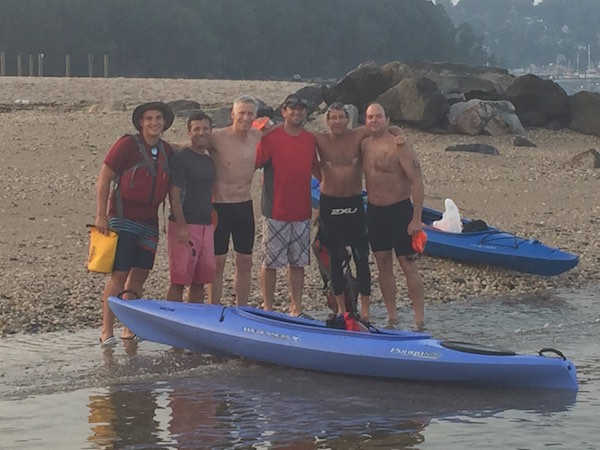 On July 30, 15 Scarsdale residents (Plus 2 non-Scarsdale family members) swam in the Swim Across America Long Island Sound Swim to raise money for cancer research, treatment and awareness. Dedicating their swim to Paul Jimenez, the Greenacres 5th grader who lost his fight against rhabdomyosarcoma this past January, Team #PaulieStrong has already raised almost $105,000 for this year's event.
On July 30, 15 Scarsdale residents (Plus 2 non-Scarsdale family members) swam in the Swim Across America Long Island Sound Swim to raise money for cancer research, treatment and awareness. Dedicating their swim to Paul Jimenez, the Greenacres 5th grader who lost his fight against rhabdomyosarcoma this past January, Team #PaulieStrong has already raised almost $105,000 for this year's event.
More than 500 swimmers participated in last week's Long Island Sound Swim and, collectively, raised more than $1,000,000. In raising 10% of the total, Team #PaulieStrong raised more than any other dedication team in any Swim Across America event. You can read all about the Long Island Sound Swim and Team #PaulieStrong here:
All of the funds raised at this event go to support:
- The Swim Across America Lab at Memorial Sloan Kettering
- The Tommy Palazzo Fellowship for Pediatric Oncology at New York Presbyterian, and
- The Cancer Support Team - providing 100% free services to patients and their families battling cancer
- In addition the Jimenez family has created the #PaulieStrong Foundation to fund research into pediatric cancer because only 4% of all funding from the National Cancer Institute goes to fund pediatric cancer research. You can find out more about the #PaulieStrong Foundation here:
Here are the members of Team #PaulieStrong: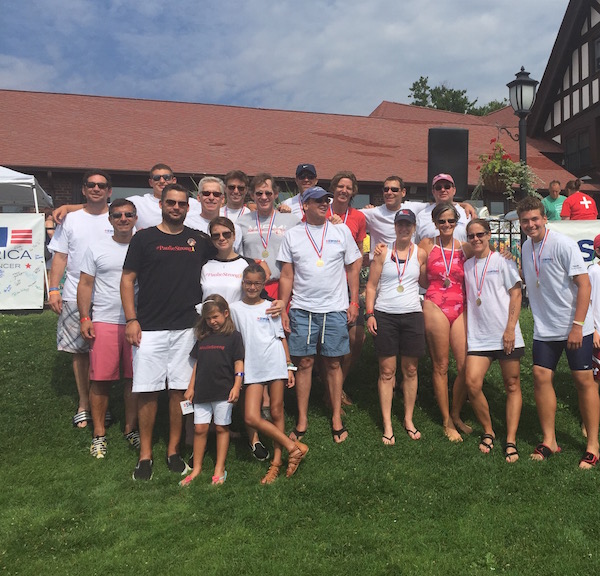
2 Kilometer Swimmers
Carol Wolfe
Noah Glantz
Peter Doyle
Trisanne Berger
Jeannine Palermo
Miles Rubin
Razy Hirschberg
Hanan Blaustein
Jeremy Glantz
5 Kilometer Swimmers
John Needham
Chip Rich
Patrick Bates
Eldad Blaustein
10 Kilometer Swimmers
Joe Kaufman
Joel Talish
Josh Glantz
The 10k swimmers were accompanied and supported by kayakers Joe LoSardo, Mitch Kulick and Ben Kulick, all Greenacres residents.
SHS Grads Build Online Site for Student Job-Seekers
- Details
- Written by Joanne Wallenstein
- Hits: 6107
Christine Desbois, Kimberly Zou and Xavier Worsley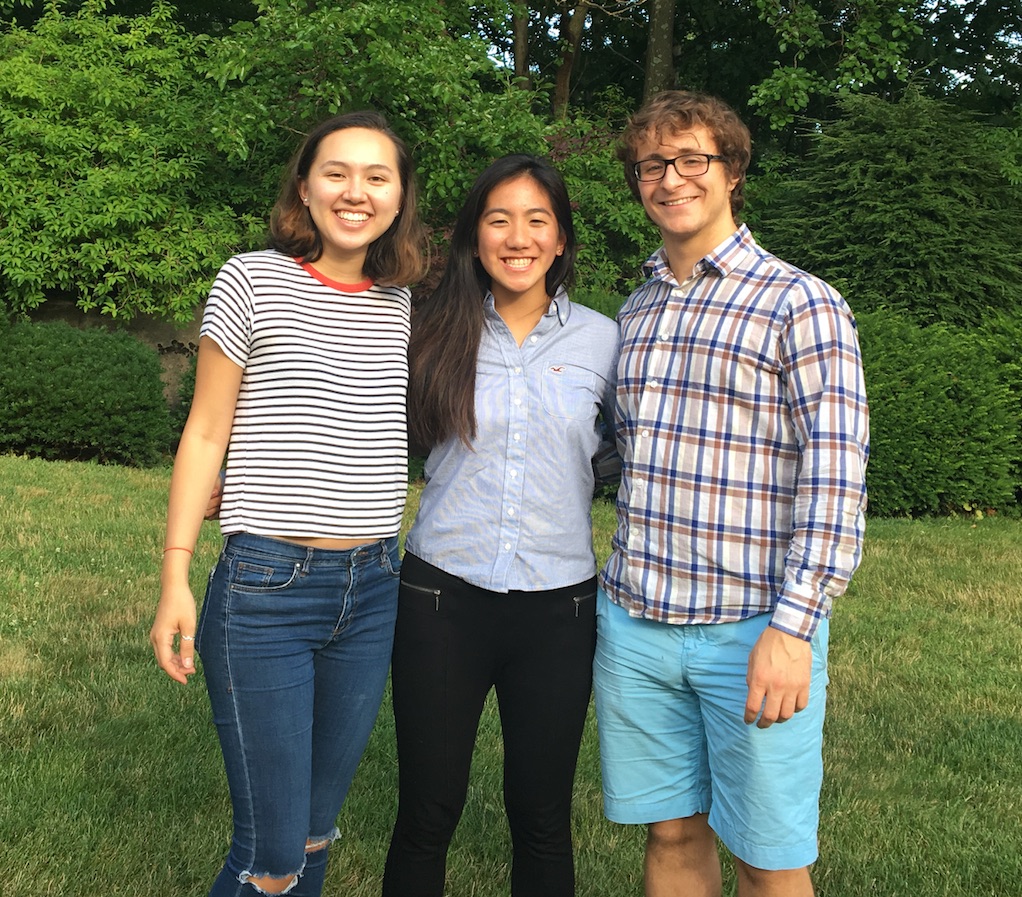
Kimberly, a rising sophomore at Johns Hopkins University, created the site after having a difficult experience finding part-time work to supplement her unpaid summer internship at a wealth management firm. "I already worked most days as an intern," she explains, "but I also wanted to earn money this summer to help cover the costs of college." As part of the Hopkins Varsity tennis team, she thought it would be a good idea to give private tennis lessons. However, she faced several roadblocks, namely an inefficient process for publicizing her availability as a tennis coach and attracting clientele. Through conversations with her friends and classmates, Kimberly realized that other students were going through the same struggle when finding jobs. Most opportunities available to students, from babysitting to interning, were usually found through word of mouth or familial connections. "So I thought: why not create a simple platform for students and employers to connect?" Kimberly said.
"What we aim to do", explains Christine, a close friend and business partner of Kimberly's who will commence her second year at Columbia University this fall, "is enhance our site's network so that it becomes the go-to for any student employment." They will initially be concentrating on expanding in Westchester, before growing their user base nationwide to support all students in America. Focusing on Westchester, however, was not going to be particularly easy from Baltimore and NYC with a college workload. "That's where Xav came in," said Christine. Xavier is taking a gap year to pursue business interests before attending the University of Chicago; he jumped at the opportunity to work with the two. "It's an extremely exciting project, and I'm so glad that I have been able to contribute," he says. Xavier had a similar experience to Kimberly during his junior year while looking for work as a tutor. "I found that it took a serious amount of effort to find clients- I had no good starting point and was really on my own apart from some personal connections." Xavier eventually managed to expand his tutoring work to connecting other tutors with parents and managing those relationships.
Ironically, these parents experienced similar difficulties when looking to hire. "Many of the people whom I worked for had a parallel experience: strongly desiring a tutor, coach or similar student employee but being unable to find one." Jobbard caters to local individuals who seek student help and local businesses looking for employees or interns. Now, instead of having each individual worker expend large amounts of effort trying to find a job and vice versa, Jobbard puts all jobs and student workers in the same place so that more time can be spent doing the jobs rather than finding them.
For Kimberly and her team, empowering students  to explore their passions and potential career paths is the main vision. "In addition", says Kim, "we want students to be able to start pursuing their interests early on by using our service. Whether you want to be a teacher, a doctor, or even start your own business, there's always a job opportunity on Jobbard that can help you gain the experience and insight. Of course, there's the added benefit of earning money along the way". The site includes a comprehensive category system for employers and students to explore, allowing workers to find desired opportunities in the listed jobs. Jobbard also encourages students to create a resume, along with listing any particular career preferences or special skills that they may have- these functions help both parties find a suitable solution to their employment needs.
to explore their passions and potential career paths is the main vision. "In addition", says Kim, "we want students to be able to start pursuing their interests early on by using our service. Whether you want to be a teacher, a doctor, or even start your own business, there's always a job opportunity on Jobbard that can help you gain the experience and insight. Of course, there's the added benefit of earning money along the way". The site includes a comprehensive category system for employers and students to explore, allowing workers to find desired opportunities in the listed jobs. Jobbard also encourages students to create a resume, along with listing any particular career preferences or special skills that they may have- these functions help both parties find a suitable solution to their employment needs.
One particularly interesting feature of Jobbard is its blog: every few days a helpful article pops up, ranging from tips on evaluating employees to advice about how to succeed as one. There are many more cool features beyond the blog that are coming up as well. "On a long-term basis we will, at the very least, include an employer/employee review and rating system, connections between previous colleagues and potentially even an integration of payment and time logs into our system," says Kimberly.
All in all, Jobbard is a sleek operation with strong potential. The enterprise and ambition shown by Kimberly, Christine and Xavier is a testament to not only the expectations set by Scarsdale High School, but the skills the school provides its students to meet those expectations. "The achievements of many Scarsdale residents, too, are an inspiration to work even harder," says Xavier. Jobbard has the potential to be an efficient and widely-used tool for student employment in the coming months. So, if you are an employer looking to hire or a student still seeking a summer job, Jobbard is an online tool to use.
Scarsdale Concours to Support the PaulieStrong Foundation
- Details
- Written by Joanne Wallenstein
- Hits: 4595
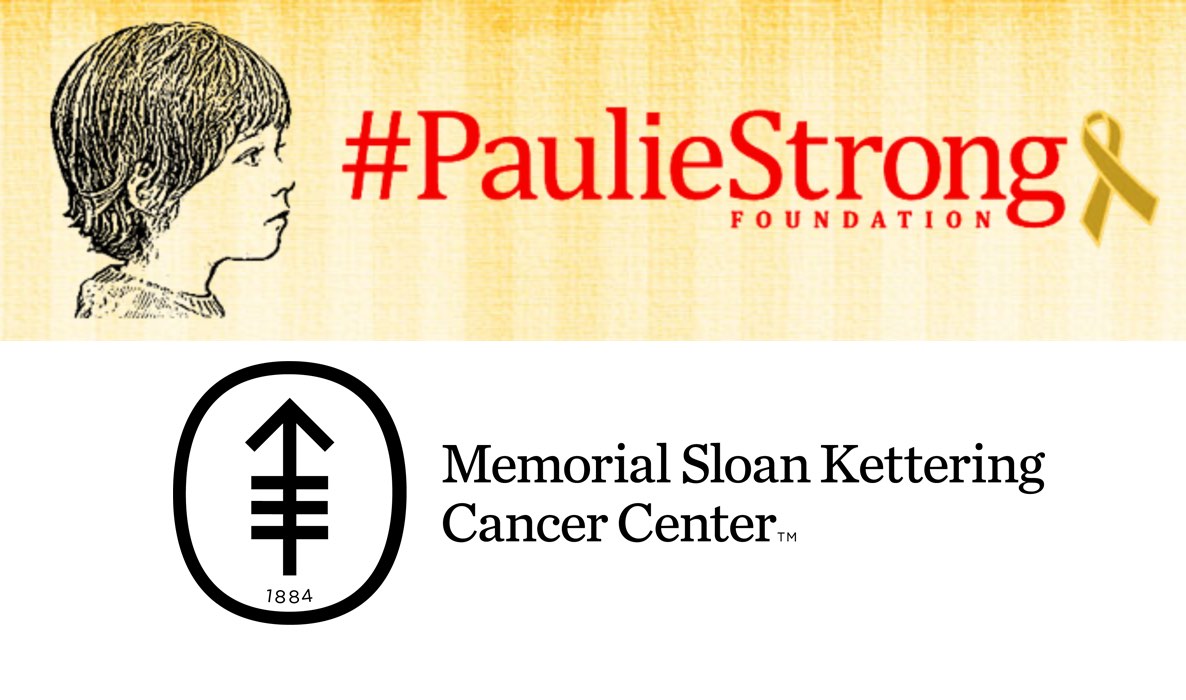 The Scarsdale Concours has added the PaulieStrong Foundation as a new beneficiary for their 2016 event. The mission of the PaulieStrong Foundation is to raise awareness and funding for pediatric cancer research.
The Scarsdale Concours has added the PaulieStrong Foundation as a new beneficiary for their 2016 event. The mission of the PaulieStrong Foundation is to raise awareness and funding for pediatric cancer research.
In October 2015, Paul Ulysses Jiminez of Greenacres was diagnosed with rhabdomyosarcoma, a rare cancer that forms on soft tissue. It took his life after just two and half months on January 5th 2016.
He was a happy and loving child 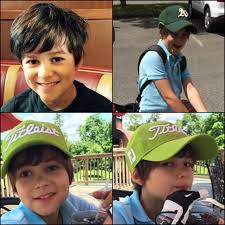 who will be remembered for his infectious smile and laugh. He saw the good in everybody and anyone who was lucky enough to have met him instantly knew how special he was.
who will be remembered for his infectious smile and laugh. He saw the good in everybody and anyone who was lucky enough to have met him instantly knew how special he was.
Paul was wise beyond his ten years and after his diagnosis it was his idea to create a campaign to raise funds to find a cure for cancer. PaulieStrong will raise awareness and raise funding to help all children who have to battle cancer which, according to the National Cancer Institute is the #1 disease killer of children in the United States. Nearly 16,000 children and adolescents are diagnosed each year and yet, less than four percent of all funding from the National Cancer Institute goes to research into childhood cancers. Most clinical trials are to treat adults. In the last 20 years, only two major drugs have been developed for children.
Funds raised through The PaulieStrong Foundation will go directly to the Pediatric Oncology Team at Memorial Sloan Kettering Cancer Center in New York City to help fund research into pediatric sarcomas.
Mark your calendar to attend the 13th annual Scarsdale Concours in Scarsdale Village on Sunday October 2 where you can see a great display of vintage automobiles and support PaulieStrong and other worthy causes.
Early Morning Fire on Bell Road
- Details
- Written by Joanne Wallenstein
- Hits: 4484
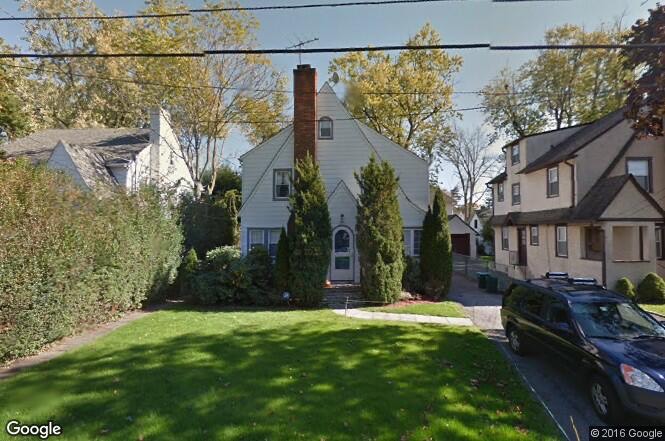 At 2:27 am on Monday morning July 11 fire struck a home at 166 Bell Road. When the Scarsdale Fire Department arrived, heavy smoke was coming out of a window on the third floor of the house. According to the fire department report, "A crew made an aggressive interior attack on the third floor where they were met with lights-out smoke conditions and a moderate to high heat condition. The fire was placed under control after about 20 minutes." The homeowner first tried to put the fire out himself before calling for help.
At 2:27 am on Monday morning July 11 fire struck a home at 166 Bell Road. When the Scarsdale Fire Department arrived, heavy smoke was coming out of a window on the third floor of the house. According to the fire department report, "A crew made an aggressive interior attack on the third floor where they were met with lights-out smoke conditions and a moderate to high heat condition. The fire was placed under control after about 20 minutes." The homeowner first tried to put the fire out himself before calling for help.
The Scarsdale Fire Department was assisted by volunteer firemen, the Scarsdale Ambulance Corps as well as the Greenville and Hartsdale Fire Departments. The preliminary investigation into the cause of the fire pointed to a problem with a portable air conditioning unit on the third floor. Cond Edison cut off the power to the house and the residents were instructed to stay out until the smoke odor and residue could be eliminated. There were no injuries, and according to new Fire Chief Jim Seymour, "The crew working, led by Captain Dan Brown did a fantastic job."














